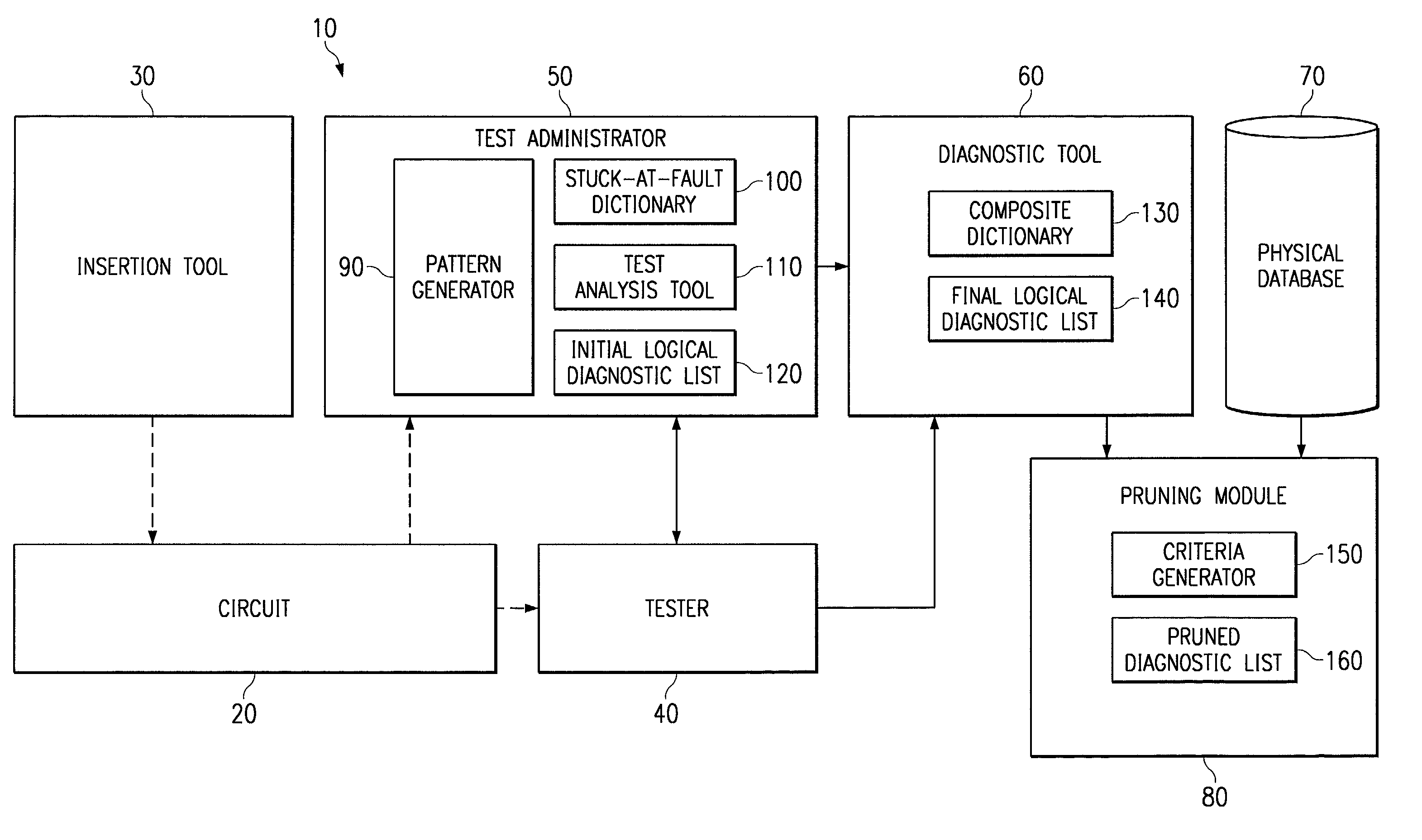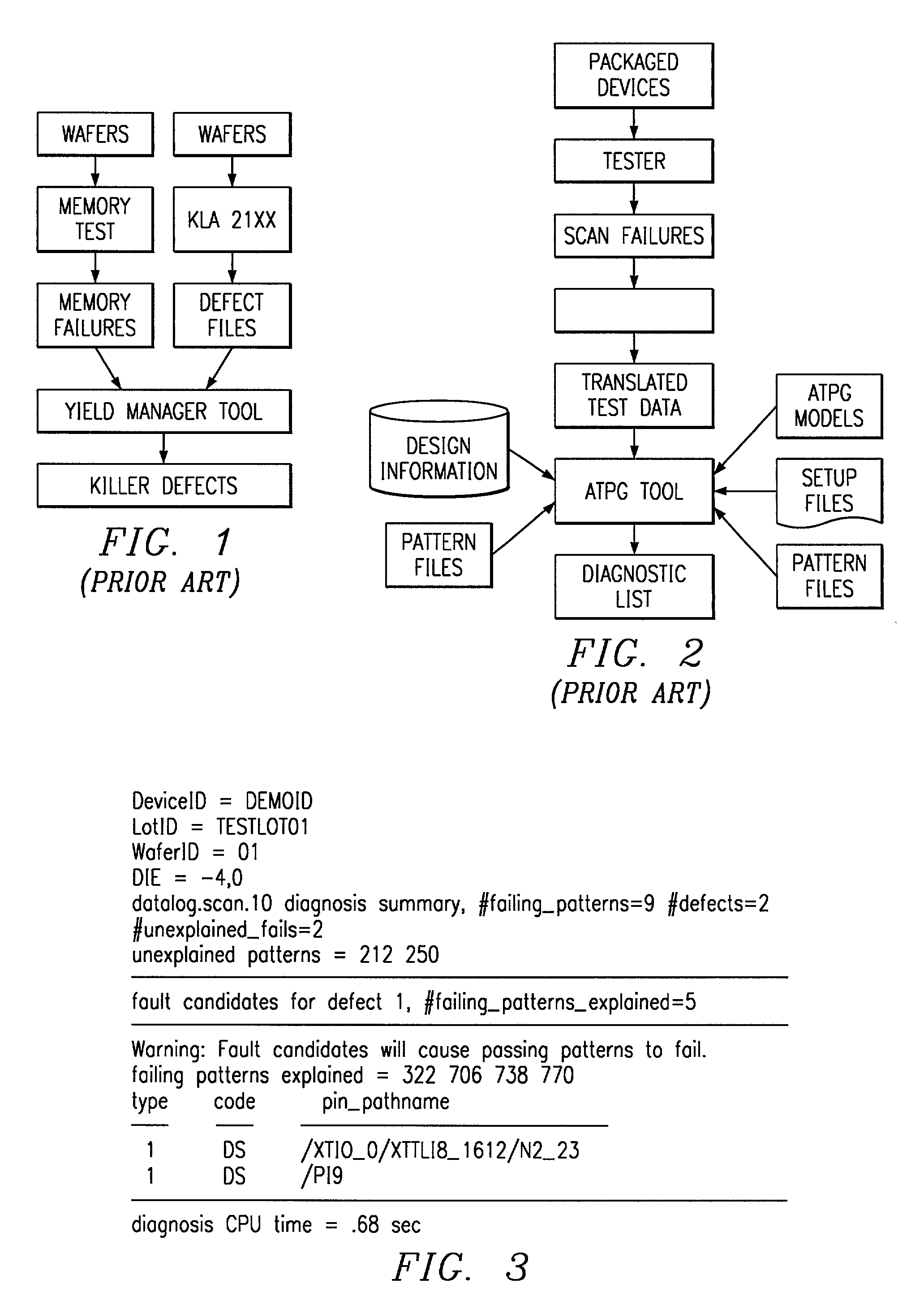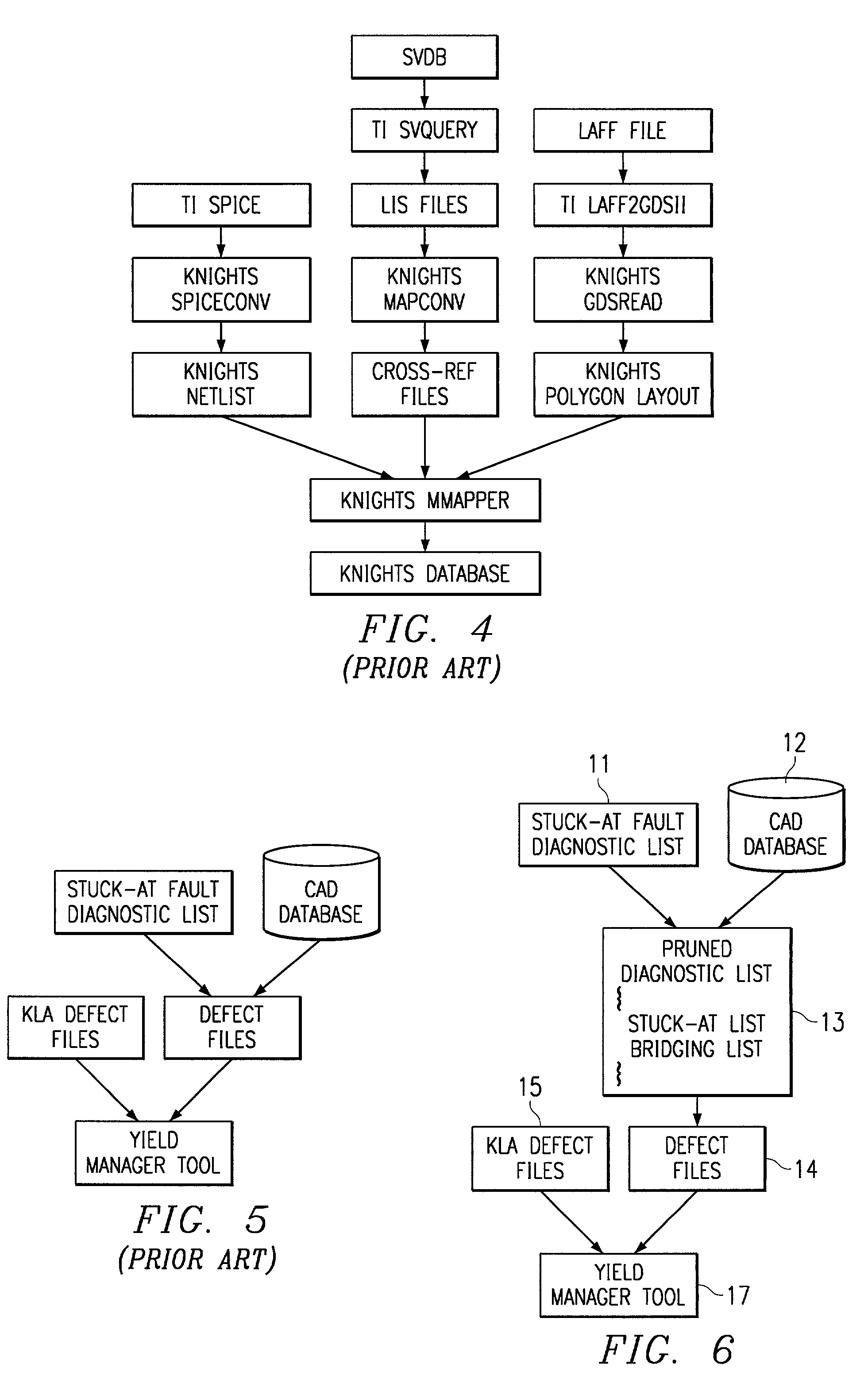System for mapping logical functional test data of logical integrated circuits to physical representation using pruned diagnostic list
a technology of logical integrated circuits and diagnostic lists, applied in testing circuits, resistance/reactance/impedence, instruments, etc., can solve problems such as inability to "bitmap" the logic area of a chip, errors in read/write testing pin-point likely physical defects, and memory chips in reality lend themselves to failure analysis
- Summary
- Abstract
- Description
- Claims
- Application Information
AI Technical Summary
Benefits of technology
Problems solved by technology
Method used
Image
Examples
Embodiment Construction
[0024] Referring to FIG. 5, there is illustrated the logic bitmap flow using stuck-at fault diagnostic list. The defects are collected using, for example, a KLA 21xx in-line manufacturing equipment. This is applied as one input to the Yield Management tool. The other input to overlay is provided by the stuck-at fault diagnostic list and the Computer Aided Design (CAD) database using a commercially available ATPG tool. The ATPG tool uses the translated test data, together with the test pattern files, set-up files, one or more ATPG diagnostic models, and design information from the design database to identify suspected failing nodes, output from the diagnostic list. For more information, refer to application Ser. No. 09 / 192,164, filed Nov. 13, 1998 of Shawn Smith, Hari Balachandran and Jason Parker entitled "IC Test Software System for Mapping Logical Functional Test Data of Logical Integrated Circuits to Physical Representation" incorporated herein by reference.
[0025] In accordance w...
PUM
 Login to View More
Login to View More Abstract
Description
Claims
Application Information
 Login to View More
Login to View More - R&D
- Intellectual Property
- Life Sciences
- Materials
- Tech Scout
- Unparalleled Data Quality
- Higher Quality Content
- 60% Fewer Hallucinations
Browse by: Latest US Patents, China's latest patents, Technical Efficacy Thesaurus, Application Domain, Technology Topic, Popular Technical Reports.
© 2025 PatSnap. All rights reserved.Legal|Privacy policy|Modern Slavery Act Transparency Statement|Sitemap|About US| Contact US: help@patsnap.com



